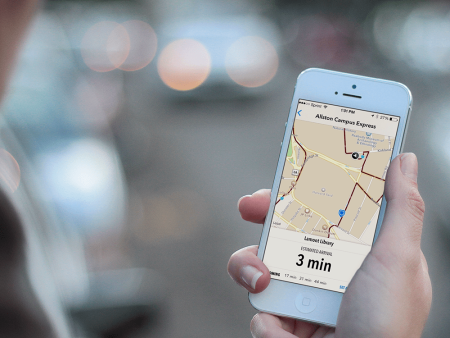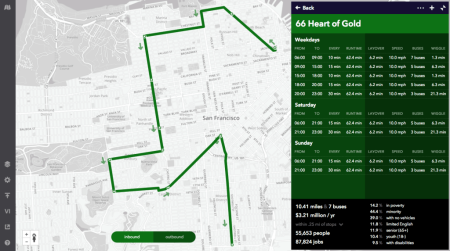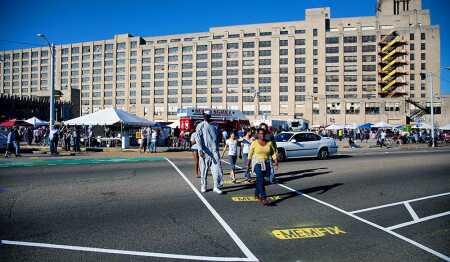Civic tech—the focus of technological resources on the public good—is most often associated with improving how government systems and services operate. At the local, state, and federal levels, the civic tech industry has gained momentum: 121 companies worked in the realm in 2012, up from 34 in 2004, according to The Emergence of Civic Tech: Investments in a Growing Field, a 2013 study by the Knight Foundation.
While making public services faster, easier to use, and more cost-effective is always valuable, several examples of civic-tech initiatives have particularly important implications for real estate, whether by expediting permitting processes or providing better information on which to base major decisions on allocation of public resources.
Civic tech can be deployed to streamline implementation of business and development regulations and identify opportunities for economic growth. Layer upon layer of regulations, approvals, permits, and bureaucratic red tape cause delays and unpredictability. Civic tech can help alleviate this intimidating and opaque process that creates barriers to economic development and runs counter to the public and private interest in creating, nurturing, and growing business enterprises and opportunities.
Likewise, tech-focused strategies for complex transportation networks address inefficiencies in transit modes to aid in the design of more effective systems for growing cities. New data-driven technologies give developers and city planners the tools to more easily and effectively revitalize neighborhoods and communities; they also give even small, entrepreneurial development firms the ability to compete with larger players. One such firm, ASG Real Estate in Los Angeles, now can use information available electronically from city building and safety departments and other agencies to compete with firms that have deeper resources or a larger staff, says president and founder Allan Glass.
New tech tools such as InfillScore provide city planners, as well as residents, civic leaders, and developers, the ability to assess a city’s readiness for infill development. Building on the work of the U.S. Environmental Protection Agency, planner and sustainability consultant Darin Dinsmore created the InfillScore tool in collaboration with the national nonprofit Local Government Commission and the Oakland, California–based nonprofit Center for Creative Land Recycling (Brownfields Department), founded by the Trust for Public Land.
The InfillScore tool includes a free online survey and a toolkit that provides 30 strategies that can help a city or neighborhood accelerate infill development rather than contribute to urban sprawl. It is provided free for use by cities and developers; users may choose to subscribe to the action-planning tools and “roadmap” based on survey results.
The tools in InfillScore, intended to leverage public infrastructure investment while attracting private capital, cover strategies related to communication, policy and programs, partnerships, place making, funding of infill development, and infrastructure finance.
Especially with increased market demand for urban walkability, a city can boost its economic vitality by prioritizing infill development. A 2015 study published in the Journal of Planning Education and Research by lead researchers Wei Li and Kenneth Joh of Texas A&M University, found that “investing in pedestrian infrastructure and promoting commercial development in the most walkable neighborhoods will yield the greatest dividends for cities through increased property revenue.”
“The self-assessment and action-planning tools will save hundreds of hours of research and help to activate the public and private sector to deliver high-quality infill development that better serves community needs,” predicts Dinsmore. City governments, including those in Las Vegas, Honolulu, and Anaheim, California, are already using InfillScore’s infill, infrastructure, and civic engagement tools to stimulate revitalization.
Also tackling public policy initiatives, the nonprofit organization Code for America works with cities across the United States to create open-source technology to make government services simple, effective, and easy to use. In Florida’s Miami-Dade County, the organization deployed a team to analyze and improve the services provided by two city departments—Regulatory and Economic Resources, and Community Information and Outreach.
Serving 2.5 million people in 34 cities and a sprawling unincorporated area of south Florida, Miami-Dade County has a vast mandate to provide services to a diverse constituency. The Code for America team focused on the building and permitting process, finding that most residents had to hire a specialized consultant in order to acquire even relatively simple permits.
After preliminary study of the county’s system, the team’s main project was to improve the feedback platform by transforming it from paper to a digital survey, as well as create a Spanish-language version of the survey to accommodate one-third of the county’s residents. The survey results are provided to the county government on a user-friendly dashboard, as well as to the community.
The team’s findings and tools provide a model that other Miami-Dade departments and services can use to make government more accessible and user friendly. “Through process and technological improvements, we hope to design a more intuitive and simple way for residents to obtain a building permit, and find ways to help the county meaningfully collect customer-satisfaction feedback,” Code for America Miami-Dade says on its website.
The Philanthropic Model
While it is one thing to digitize information on regulations or permits—a relatively straightforward task in the 21st century—it is quite another to use technology to identify new ways of stimulating economic growth.
Bloomberg Philanthropies, a nonprofit organization founded by businessman and former New York City Mayor Michael Bloomberg, espouses the use of Big Data to “assess opportunities, measure progress, and evaluate impact and improve performance.” The organization, which includes former high-ranking city officials, has sponsored a series of innovation delivery teams in cities across the United States using this approach to address city-specific issues.
Among these cities, Memphis received a three-year grant from Bloomberg Philanthropies in 2012 to establish the Mayor’s Innovation Delivery Team (MIDT) with a simple mission for neighborhood revitalization: “clean it, activate it, sustain it.” MIDT designated three test neighborhoods—South Memphis, Binghamton, and Crosstown—and partnered with the city’s Division of Planning and Development to create the Economic Gardening program, providing strategic consulting and building capacity for growth for small and medium-sized businesses in the city.
In addition, the Memphis MIDT created a program called MEMFix in collaboration with Livable Memphis, a program within the Memphis Community Development Council. MemFix allows residents to visualize the potential of their commercial districts through idea prototypes, testing of retail markets, and revitalization of underused commercial areas.
As part of an effort to attract residents back to the urban core, MEMFix temporarily activates specific areas of the city to demonstrate the potential of neighborhood revitalization, public space, and economic vitality. MEMFix allows residents to see in person the potential of a neighborhood for a day or weekend by creating temporary bike lines, putting in place elements allowing safe walkability and pedestrian access, and providing pop-up shops, activated storefronts, community gardens, green space, and activities for visitors.
For each event, data are gathered before, during, and six months and a year afterward to track the progress, impacts, and success of the temporary interventions. Data collected include number of pedestrians and bicyclists, average traffic speeds, number of vacant properties, sales data at neighborhood businesses, services offered in the neighborhood, and property values and rents. The final product of the program was a 50-page do-it-yourself manual, A Practical Guide to Reimagining Your Neighborhood.
According to the Memphis MIDT website, the program from 2012 to 2015 “helped demonstrate the art of the possible.”
Although approached from the standpoint of a philanthropic entity, Bloomberg Philanthropies, MIDT initiatives led to tangible economic results aimed at leveraging the availability of massive amounts of data to produce economic development gains. Seven of the 16 stores activated in the program now have tenants, and, in conjunction with MEMFix’s prototyped bike paths and Memphis Mayor AC Wharton’s biking initiative, 35 miles (56 km) of bike lanes have been installed over the past two years. In addition, more than 17,000 people attended MEMFix events and were “reintroduced” to Memphis neighborhoods—seeing neglected neighborhoods in a new light with the prospect of revitalization.
Tuning Transit
Tech initiatives are also helping transit agencies address transportation availability, accessibility, and preferences in response to the proliferation of and shifts in concentrations of density. The future of transportation, with expected innovations such as self-driving cars and international architecture firm NBBJ’s conceptual three-lane moving walkway for the London Underground, does not favor commuters who wait roadside at bus stations.
But the reality of urban growth and reliance on public transportation in cities demands consideration of the commuter population, and civic tech has been particularly active in serving this group.
TransLoc, a Durham, North Carolina–based company that says its mission is “to take mass transit from last resort for some to first choice for all,” has worked to develop Traveler. This two-way tool—accessible via a TransLoc app, the web, and SMS text messaging—allows riders to see where transit vehicles are along their routes, as well as shows the transit agency how riders move to, through, and from the transit system. The systemwide feedback not only reveals common routes on public transportation, but also identifies unfulfilled rider demand, providing significant opportunities for transit agencies to reshape or expand routes to better suit commuter needs.
TransLoc’s first client, GoTriangle (formerly Triangle Transit), is located in the Raleigh/Durham/Chapel Hill area of North Carolina, which has many tech, pharmaceutical, and medical companies, as well as world-class educational institutions such as Duke University, the University of North Carolina at Chapel Hill, and North Carolina State University. With these universities as its cornerstones and the Research Triangle Park at its center, the region is a hotbed of technological innovation.
In the Triangle, TransLoc’s system in 2011 made real-time information available and accessible to a diverse range of riders in terms of age, education, and tech skills, and in a variety of formats. Because everyone—including commuters using seven area transit agencies—knew the exact location of all 500 buses, ridership increased by more than 26 percent in the system’s first six months, and overall customer satisfaction improved, according to TransLoc.
Taking another tack, San Francisco–based transit planning company Remix has created an online app that allows agencies to map potential bus routes and assess the cost and demographic impact of proposed changes in those routes. These interactive map interfaces allow commuters to provide feedback and submit ideas for routes online. This community engagement is accessible for a variety of users and demonstrates costs and considerations of route changes in real time.
With the ability to adapt to changing commuting patterns in a quicker, more adept, and cost-effective manner, public transportation agencies will be able to remain competitive with on-demand ride services like Uber and Lyft, as well as more effectively serve populations most reliant on transit. By providing useful data with legible mapping in a timely manner, civic tech is poised to play a pivotal role in facilitating improved public transportation.
Technology is unleashing the ability of cities and public agencies to better serve their constituencies. In constantly evolving variations of public/private partnerships, increased access to more and better data holds the promise of more efficient, accessible, and effective cities.
Howard Kozloff is managing partner at Agora Partners, a Los Angeles–based development, investment and advisory firm. Christina Calabrese is director of planning at Lone Mountain Land Company in Big Sky, Montana.







